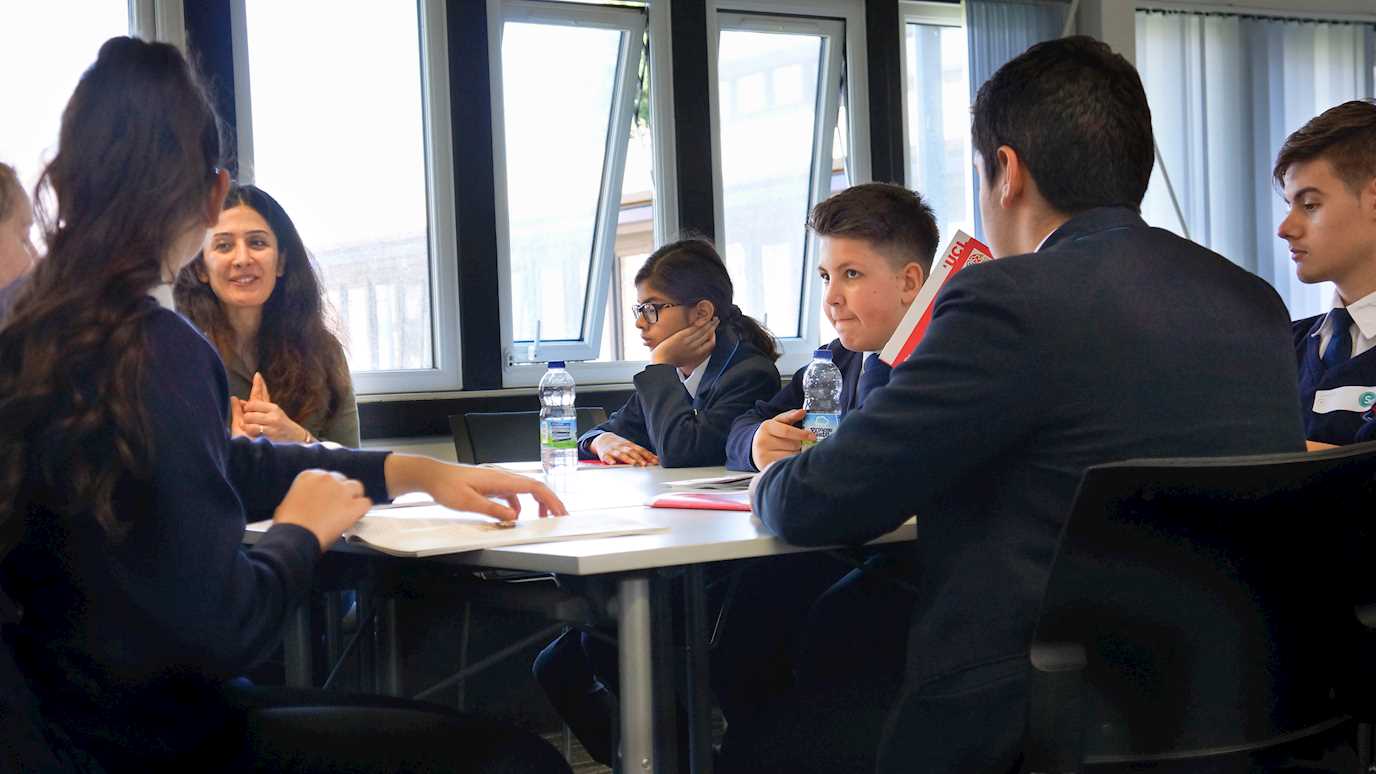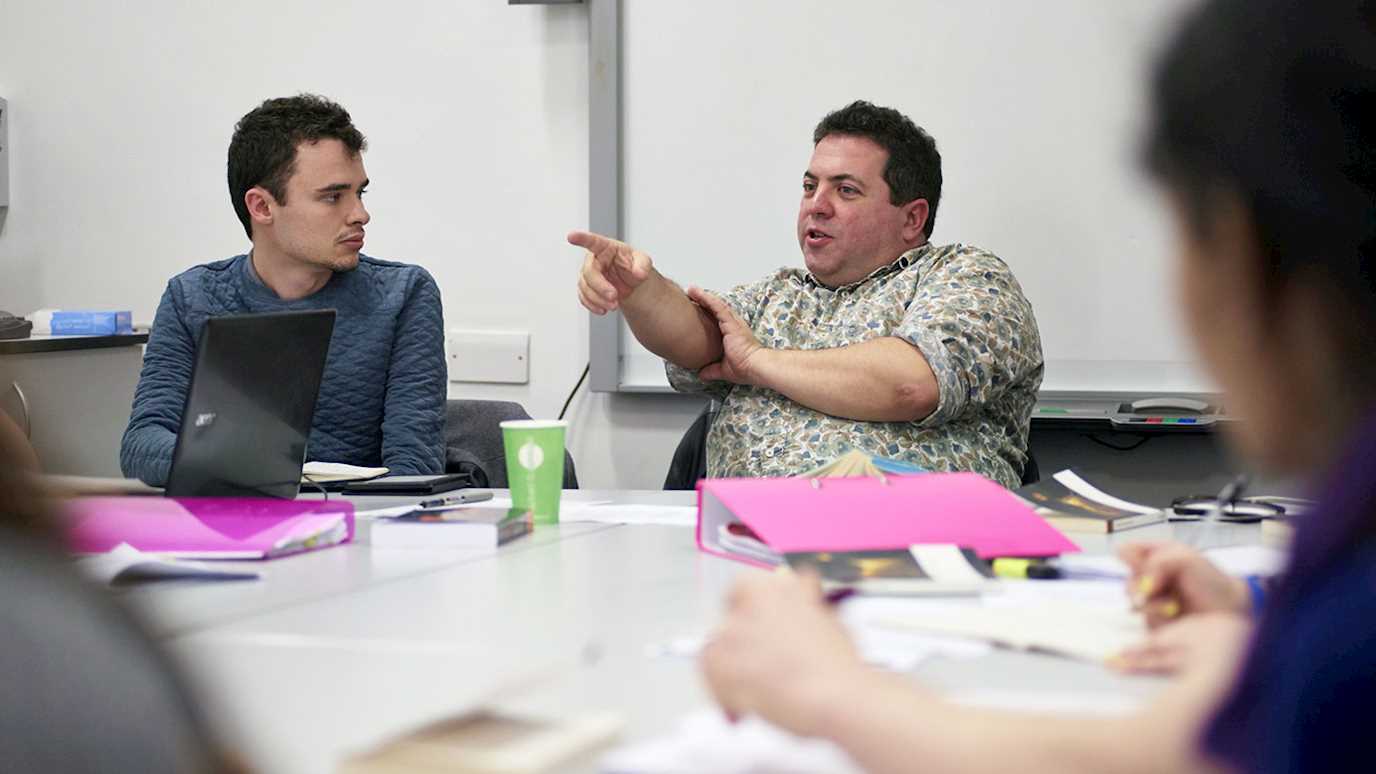Dr Harry Newman on teaching character in Shakespeare.
The English Department at Royal Holloway is home to several renowned Shakespeare scholars including Dr Harry Newman and Dr Deana Rankin. You can study Shakespeare generally as part of the English Literature MA, and with particular focuses on the module ‘King Lear and The Tempest: Critical Debate and Creative Response’.
Key points
- Characters are not real people. (Example: Hamlet 1.2.) Characters are not people, but dramatic representations of people which rely on illusions produced through clever tricks of language and action on stage.
- ‘Depth’ isn’t everything. (Example: Lavinia in Titus Andronicus.)
Shakespeare has a reputation for creating characters with ‘interiority’ or ‘psychological depth’, but it’s also worthwhile to encourage your students to consider the powerful dramatic functions and effects of those characters that at first might seem ‘flat’ or ‘under-developed’. - Shakespeare didn’t call his characters ‘characters’.
Shakespeare and his contemporaries generally referred to characters as ‘persons’, a word with a literal sense of ‘masks’ (from the Latin personae). In the Renaissance acting was understood as a kind of mask-wearing, and audiences were often kept aware of the actor just beneath the surface of the character they were playing. - Focus on ‘metatheatrical’ moments.
(Examples: plays-within-plays in Hamlet 3.2 and A Midsummer Night’s Dream 5.1; Jacques in As You Like It 2.7; Coriolanus in Coriolanus 2.2)
Character is often illuminated by moments of ‘metatheatre’, i.e. anything in a play which draws attention to theatre’s unreality or artifice. These moments encourage us to recognize that characterization is not always about an entirely realistic and water-proof illusion, because they highlight the fracture between the identities of the actor and the character he or she is playing. - Watch clips of Shakespeare’s plays in performance.
These issues are best discussed in relation to specific passages from the plays, and ideally by asking students to analyse these passages on the stage/screen as well as on the page. Following up close reading exercises with clips and further questions can help students to recognise that Shakespeare’s dramatic characters were written for performance, and that their identities are mediated by actors’ and directors’ interpretation of them.
Quotations
- GERTRUDE.Do not for ever with thy vailed lids
Seek for thy noble father in the dust.
Thou know’st ’tis common, all that lives must die,
Passing through nature to eternity.
HAMLET.Ay madam, it is common.
GERTRUDE. If it be,
Why seems it so particular with thee?
HAMLET.Seems madam? nay, it is, I know not seems.
’Tis not alone my inky cloak, good mother,
Nor customary suits of solemn black,
Nor windy suspiration of forced breath,
No, nor the fruitful river in the eye,
Nor the dejected havior of the visage,
Together with all forms, moods, shapes of grief,
That can denote me truly. These indeed seem,
For they are actions that a man might play,
But I have that within which passes show –
These but the trappings and the suits of woe. (Hamlet 1.2.70-86) - DUKE SENIOR.
This wide and universal theatre
Presents more woeful pageants than the scene
Wherein we play in.
JACQUES. All the world’s a stage,
And all the men and women merely players.
They have their exits and their entrances,
And one man in his time plays many parts,
His acts being seven ages. At first the infant,
Mewling and puking in the nurse’s arms.
Then the whining schoolboy with his satchel
And shining morning face, creeping like snail
Unwillingly to school. And then the lover,
Sighing like furnace, with a woeful ballad
Made to his mistress’ eyebrow. Then, a soldier,
Full of strange oaths, and bearded like the pard,
Jealous in honour, sudden and quick in quarrel,
Seeking the bubble reputation
Even in the cannon's mouth. And then the justice,
In fair round belly with good capon lined,
With eyes severe and beard of formal cut,
Full of wise saws and modern instances;
And so he plays his part. The sixth age shifts
Into the lean and slippered pantaloon,
With spectacles on nose and pouch on side,
His youthful hose, well saved, a world too wide
For his shrunk shank, and his big, manly voice,
Turning again toward childish treble, pipes
And whistles in his sound. Last scene of all,
That ends this strange eventful history,
Is second childishness and mere oblivion;
Sans teeth, sans eyes, sans taste, sans everything. (As You Like It 2.7.137-66)
For a clip see here - MENENIUS. It then remains that you do speak to the people.
CORIOLANUS. I do beseech you,
Let me o’erleap that custom, for I cannot
Put on the gown, stand naked and entreat them
For my wounds’ sake, to give their suffrage. Please you
That I may pass this doing.
SICINIUS. Sir, the people
Must have their voices, neither will they bate
One jot of ceremony.
MENENIUS. Put them not to’t.
Pray you, go fit you to the custom, and
Take to you, as your predecessors have,
Your honour with your form.
CORIOLANUS. It is a part
That I shall blush in acting, and might well
Be taken from the people.
BRUTUS. Mark you that.
CORIOLANUS. To brag unto them “Thus I did, and thus”,
Show them th’unaching scars which I should hide,
As if I had received them for the hire
Of their breath only! (Coriolanus 2.2.133-52)
Further reading
- Yu Jin Ko, ‘Introduction’, in Shakespeare’s Sense of Character: On the Page and from the Stage, ed. Yu Jin Ko and Michael W. Shurgot (Aldershot: Ashgate, 2012), pp. 1-18.
- L. C. Knights, How many children had Lady Macbeth? An Essay on the Theory and Practice of Shakespeare Criticism (Cambridge: G. Fraser, The Minority Press, 1933)
[An old piece, but very influential in its critique ‘old’ character criticism led by A. C. Bradley at the turn of the twentieth century, and a powerful articulation of why we should not treat characters as if they were real people.]
- Stephen Orgel, ‘What is a Character?’ Text: Transactions of the Society for Textual Scholarship 8 (1995): 101-8. Follow this link.
- Emma Smith, ‘Character’, in The Cambridge Introduction to Shakespeare, ed. Smith (Cambridge: Cambridge University Press, 2007), pp. 1-22.
- Paul Yachnin and Jessica Slights, ‘Introduction’, Shakespeare and Character: Theory, History, Performance, and Theatrical Persons, ed. Yachnin and Slights (New York: Palgrave Macmillan, 2009), pp. 1-18.
- Drama Online Library
























